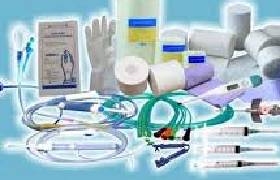
Surgical products are an integral part of the healthcare sector, enabling successful operations and improving patient outcomes. These products are carefully designed to assist healthcare professionals in conducting surgeries with precision, safety, and efficiency. Here, we provide a detailed overview of the essential surgical products used in medical facilities worldwide.
Introduction to Surgical Products
Surgical products encompass a vast range of instruments, equipment, and consumables utilized in surgical procedures. These tools are crafted to perform specific functions, such as cutting, suturing, clamping, and retracting tissues. Advanced surgical products, including robotic systems, have revolutionized modern medicine, enabling minimally invasive surgeries with improved accuracy.
Categories of Surgical Products
1. Surgical Instruments
Surgical instruments are reusable tools used during operations. These are meticulously crafted from high-grade stainless steel to ensure durability and sterilization. Common examples include:
-
Scalpels and Blades
Scalpels are precision instruments used for making incisions. The blades are disposable and available in various sizes. -
Forceps
Forceps are used to grasp, hold, or manipulate tissues. They come in two main types: thumb forceps (non-locking) and locking forceps. -
Scissors
Designed for cutting tissues, sutures, or bandages, surgical scissors vary in size and shape, such as curved or straight. -
Retractors
These are used to hold back tissue or organs, improving visibility and access to the surgical site. -
Hemostats
Hemostats are clamping instruments used to control bleeding during surgery.
2. Surgical Consumables
Consumables are single-use items that play a critical role in maintaining sterility and safety during procedures. Examples include:
-
Sutures and Staples
These are essential for closing wounds. Sutures are available in absorbable and non-absorbable forms, while staples are ideal for faster wound closure. -
Surgical Gloves
Designed to maintain a sterile environment, surgical gloves protect both the patient and the surgeon from infection. -
Surgical Drapes
Drapes create a sterile field around the surgical site, reducing the risk of contamination. -
Syringes and Needles
Essential for administering medications, anesthesia, or drawing fluids during surgery. -
Wound Dressings
Used for post-operative care, these include gauze, bandages, and adhesive dressings to protect the surgical site.
3. Operating Room Equipment
High-quality equipment is crucial for facilitating efficient surgical procedures. This includes:
-
Operating Tables
Adjustable tables that provide stability and allow precise positioning of the patient. -
Surgical Lights
These lights ensure optimal visibility of the surgical site, reducing shadows and enhancing precision. -
Electrosurgical Units (ESUs)
Used for cutting and coagulating tissues using electrical currents. -
Anesthesia Machines
Essential for delivering controlled doses of anesthesia during surgery. -
Suction Devices
Suction machines remove blood, mucus, and other fluids from the surgical area to maintain a clear view.
4. Advanced Surgical Systems
Modern technology has introduced innovative surgical systems that enhance precision and efficiency. These include:
-
Laparoscopic Instruments
Used in minimally invasive procedures, these tools are designed for small incisions, reducing recovery time. -
Robotic Surgery Systems
Robotic-assisted systems like the da Vinci Surgical System allow surgeons to perform complex procedures with enhanced accuracy and minimal invasion. -
Laser Surgery Equipment
Laser systems are widely used for procedures requiring high precision, such as ophthalmic and dermatological surgeries.
Sterilization and Maintenance of Surgical Products
To ensure patient safety, all surgical instruments and equipment must be sterilized before use. Common sterilization methods include:
-
Autoclaving
Steam under high pressure is used to kill bacteria, viruses, and spores. -
Chemical Sterilization
Disinfectants like ethylene oxide and hydrogen peroxide gas are used for heat-sensitive instruments. -
Ultraviolet (UV) Sterilization
UV light effectively eliminates pathogens on surfaces and instruments.
Importance of Surgical Products in Healthcare
Surgical products are vital for saving lives and improving the quality of medical care. They enable healthcare professionals to perform complex procedures efficiently, ensuring better outcomes for patients. With advancements in technology, surgical tools continue to evolve, offering new possibilities for treatment and recovery.
Conclusion
Surgical products are a cornerstone of modern healthcare, encompassing a wide range of instruments, consumables, and advanced systems. From traditional tools like scalpels and forceps to robotic-assisted systems, these products are designed to enhance the precision and safety of surgical procedures. The continued innovation in this field promises a future of improved surgical outcomes and patient care.
 Explore Our Websites
Explore Our Websites bcrelx.com
bcrelx.com




Leave a Reply